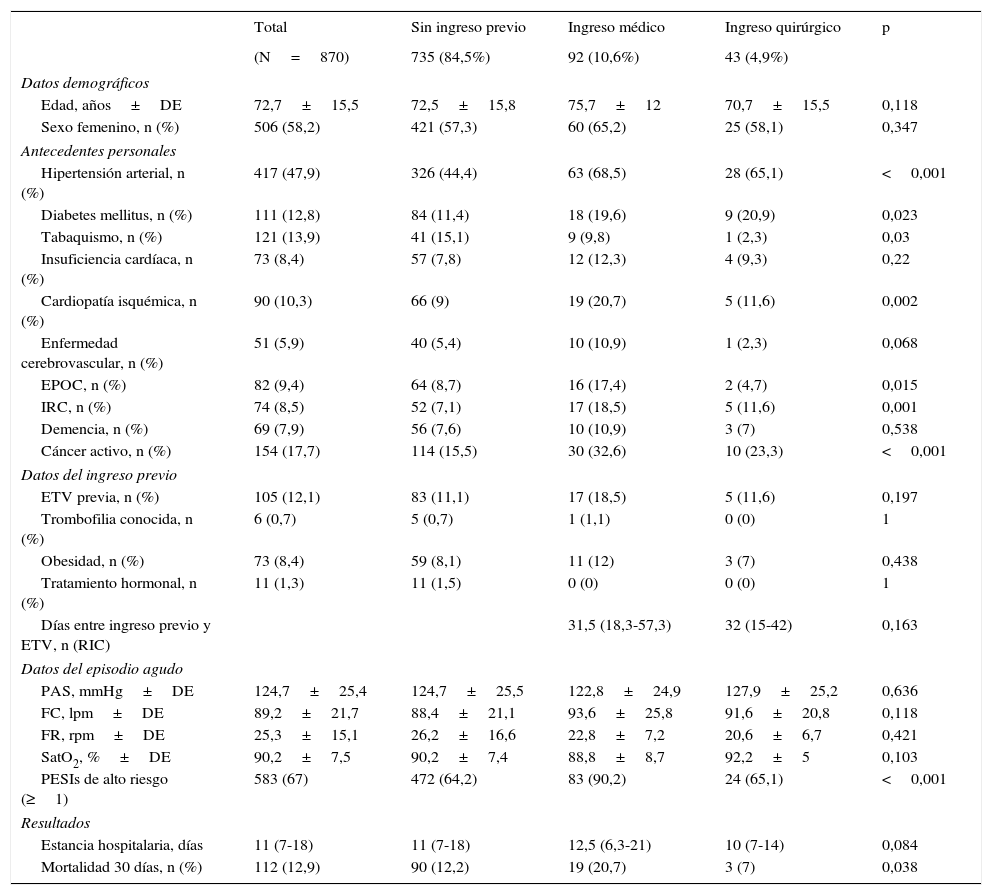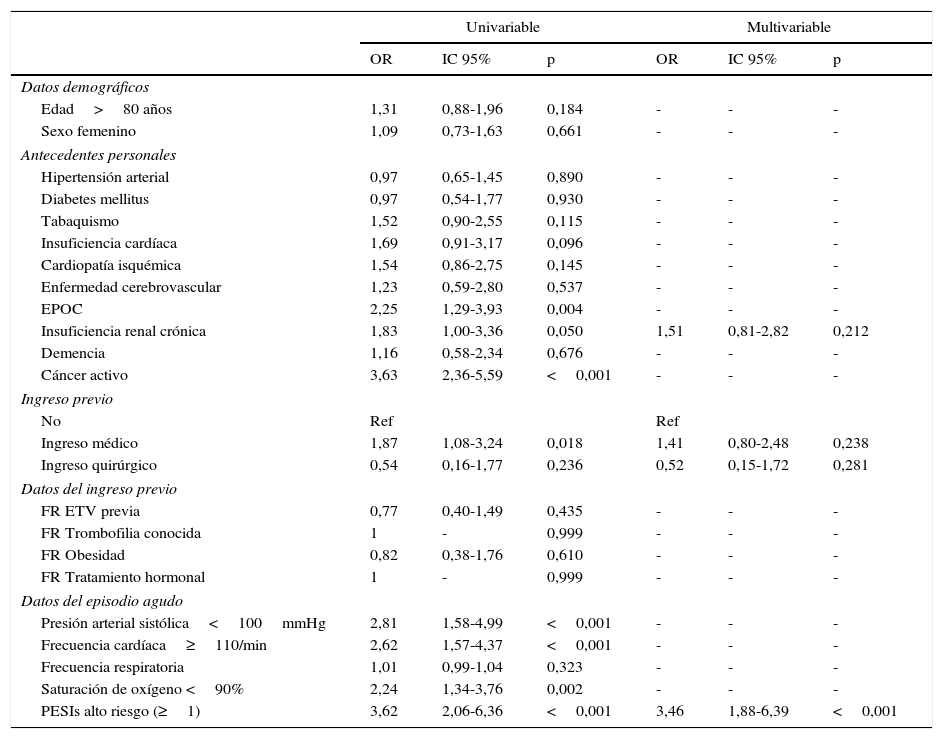Determinar si el antecedente de un ingreso, médico (IM) o quirúrgico (IQ), en los 3 meses previos es un factor asociado a la mortalidad a los 30 días en pacientes con embolia pulmonar aguda sintomática ambulatoria.
MétodoEstudio observacional de cohortes retrospectivo que incluyó a pacientes adultos con el diagnóstico de embolia pulmonar aguda sintomática en un hospital terciario durante 6 años.
ResultadosSe incluyeron 870 pacientes con una edad media de 72,7 años. Un 10,6% (92) tuvieron un IM previo y un 4,9% (43) un IQ. Ciento doce (12,9%) fallecieron en los primeros 30 días. En el grupo de IM se documentó mayor frecuencia de Pulmonary Embolism Severity Index (PESI) simplificada de alto riesgo (≥1) (IM 90,2% vs. IQ 65,1% vs. sin ingreso previo 67%; p<0,001) y de mortalidad a los 30 días (IM 20,7% vs. IQ 7% vs. sin ingreso previo 12,9%; p=0,038). Tras un análisis de regresión logística la PESI simplificada≥1 fue el único factor independiente de mortalidad a 30 días.
ConclusionesLa gravedad del episodio agudo, valorada por la escala PESI simplificada, se asocia de forma independiente con la mortalidad a 30 días en los pacientes con embolia pulmonar aguda sintomática ambulatoria. El antecedente de un IM en los 3 meses previos suele conllevar mayor gravedad en el episodio agudo.
To determine whether an earlier medical (MA) or surgical (SA) admission in the previous three months is a factor associated with mortality at 30 days in outpatients with acute symptomatic pulmonary embolism.
MethodObservational, retrospective cohort study on adult patients diagnosed with acute symptomatic pulmonary embolism in a tertiary hospital over a period of 6 years.
ResultsThe study included 870 patients with a mean age of 72.7 years: 10.6% (92) had a prior MA, 4.9% (43) had a SA and 12.9% (112) died within the first 30 days. The MA group showed a higher frequency of simplified Pulmonary Embolism Severity Index (PESI) of high risk (≥1) (MA 90.2% vs SA 65.1% vs no prior admission 67.0%; p<0.001) and mortality at 30 days (MA 20.7% vs SA 7.0% vs no prior admission 12.9%; p=0.038). The logistic regression analysis demonstrated that a simplified PESI≥1 was the only independent risk factor for mortality at 30 days.
ConclusionsThe severity of the acute episode, as assessed by the simplified PESI scale, is independently associated with mortality at 30 days in outpatients with acute symptomatic pulmonary embolism. An earlier MA in the previous 3 months usually involves greater severity in the acute episode.
Article
Diríjase desde aquí a la web de la >>>FESEMI<<< e inicie sesión mediante el formulario que se encuentra en la barra superior, pulsando sobre el candado.

Una vez autentificado, en la misma web de FESEMI, en el menú superior, elija la opción deseada.

>>>FESEMI<<<







